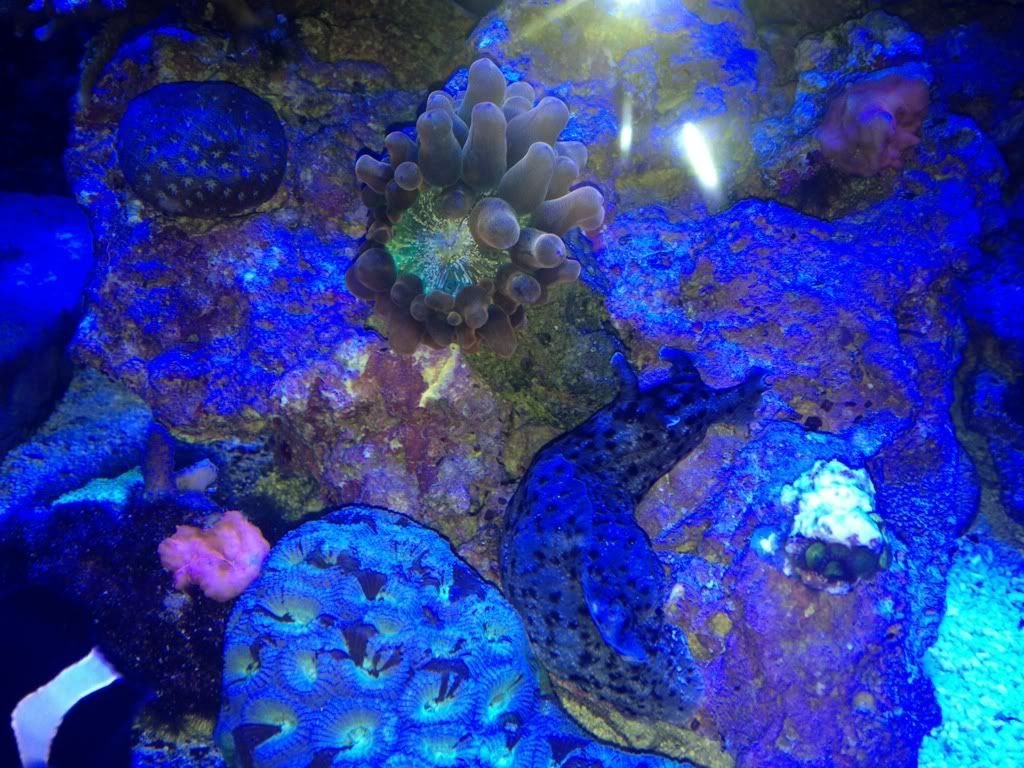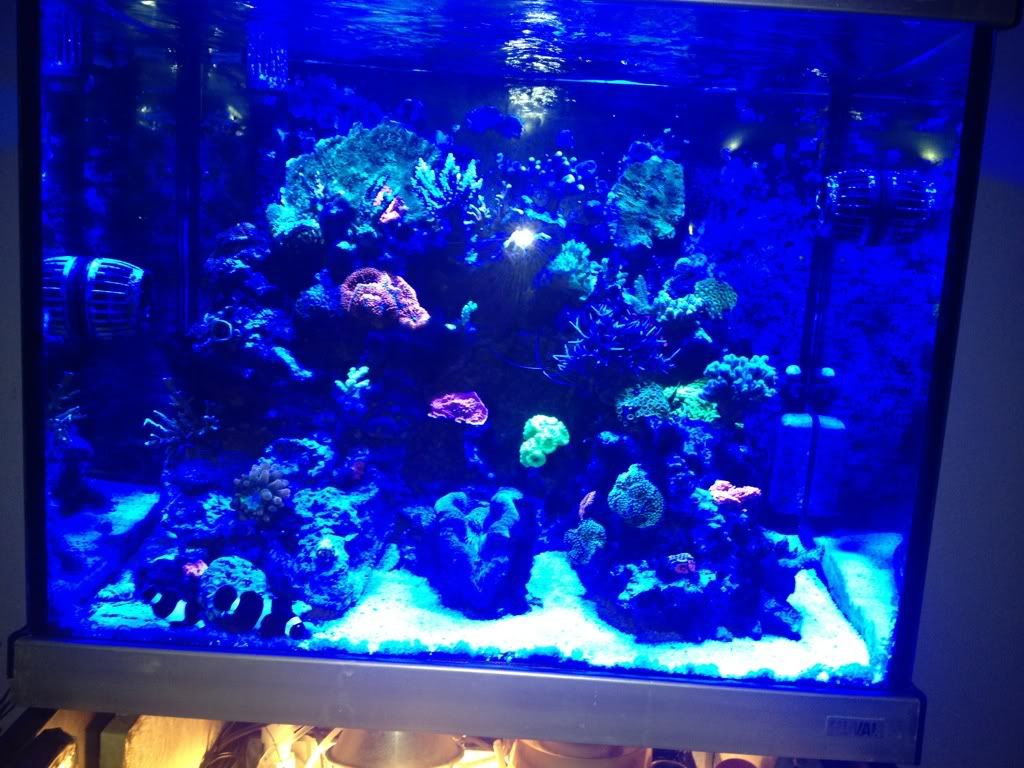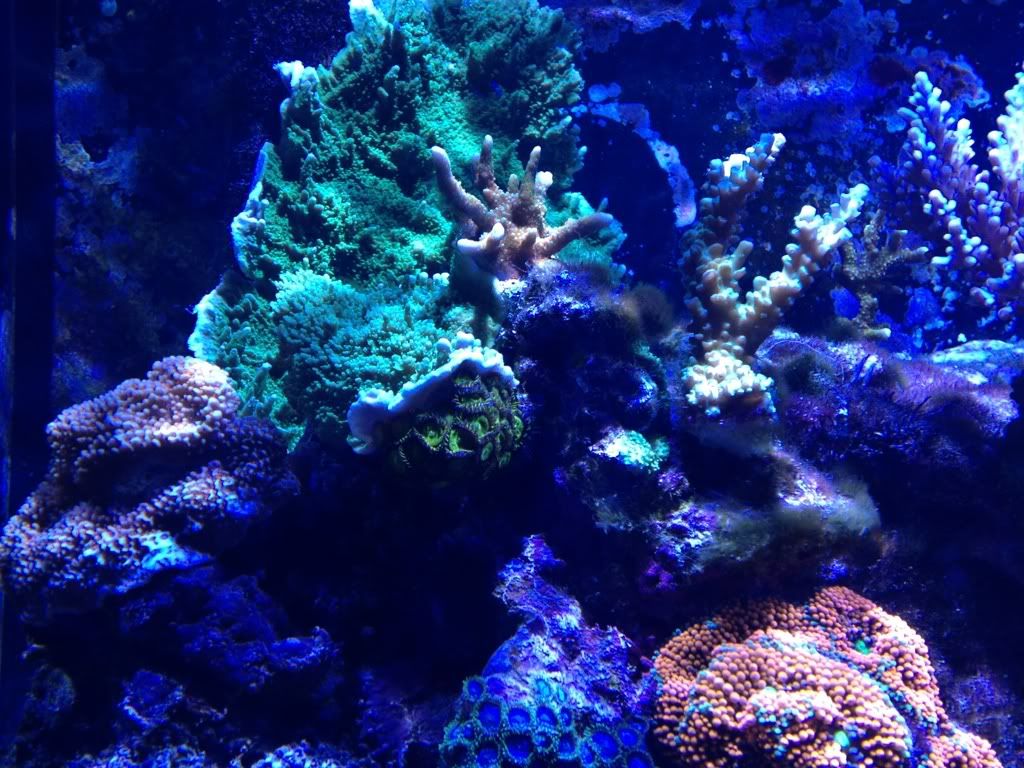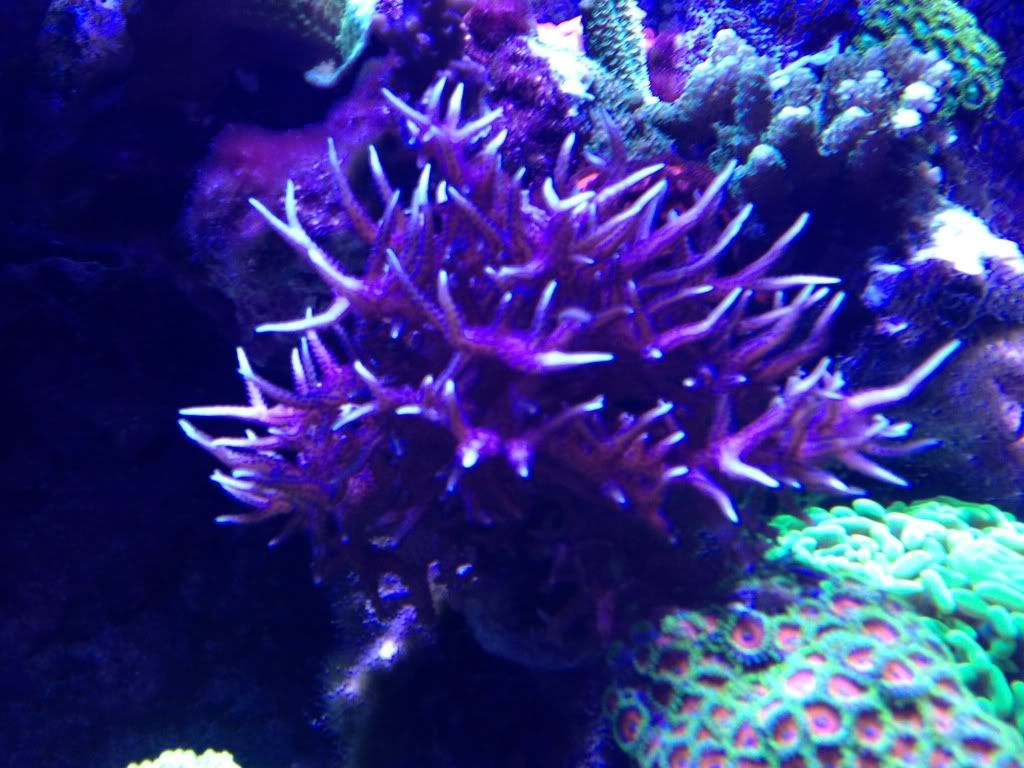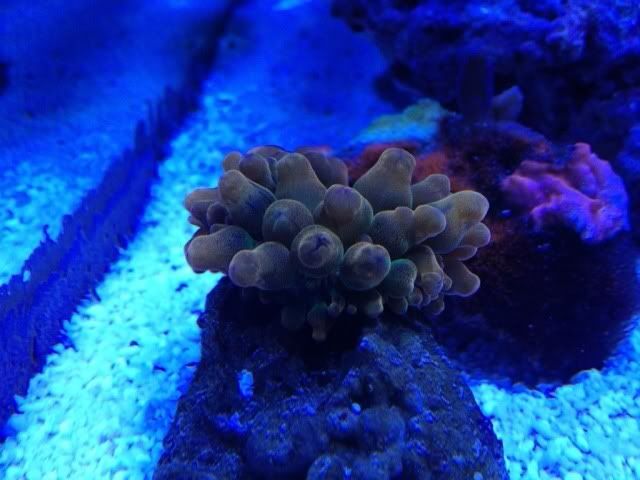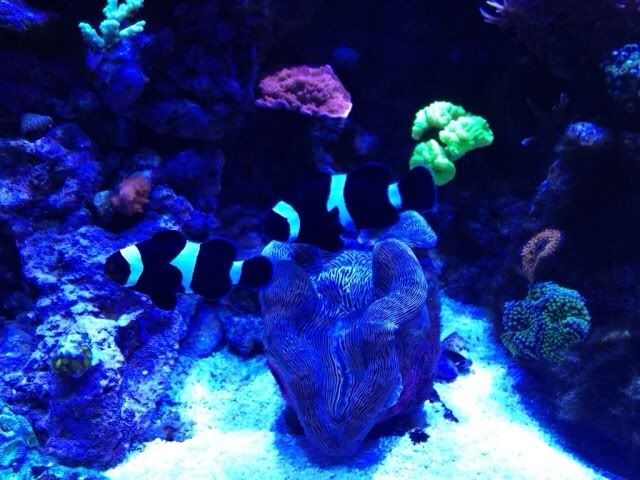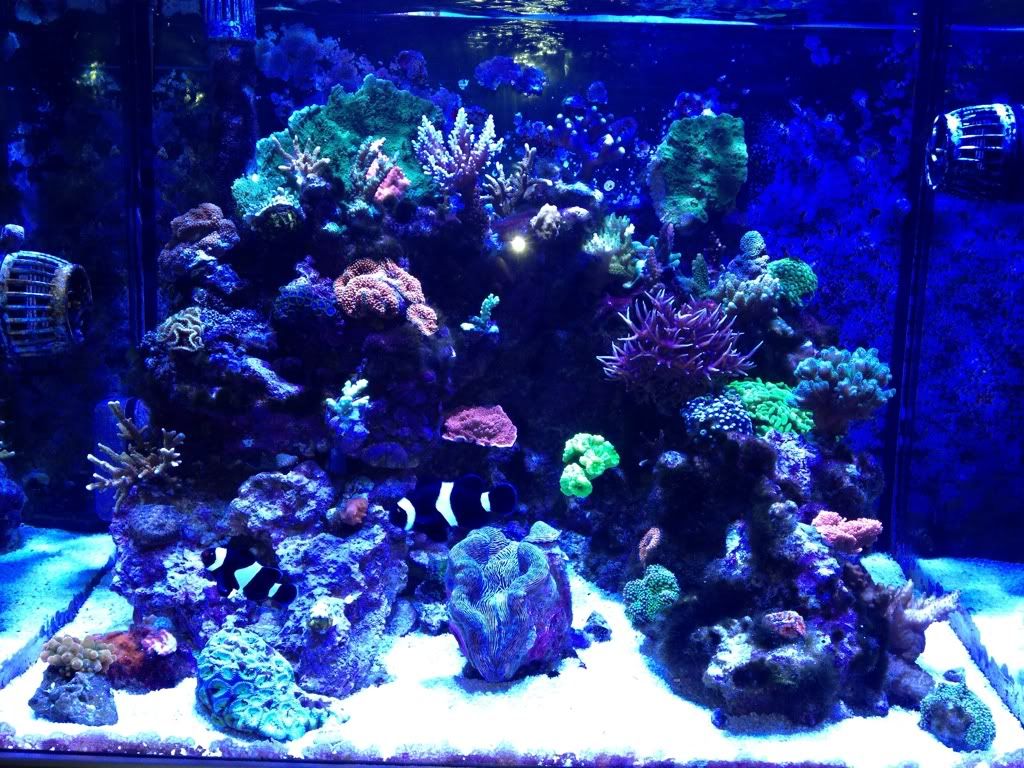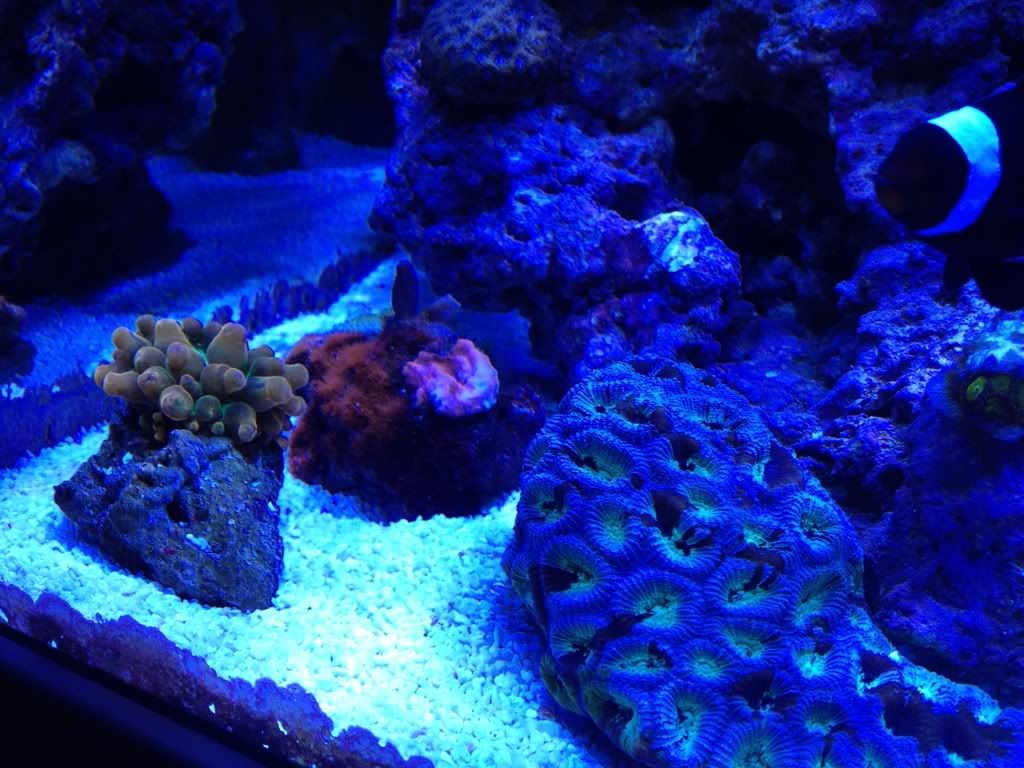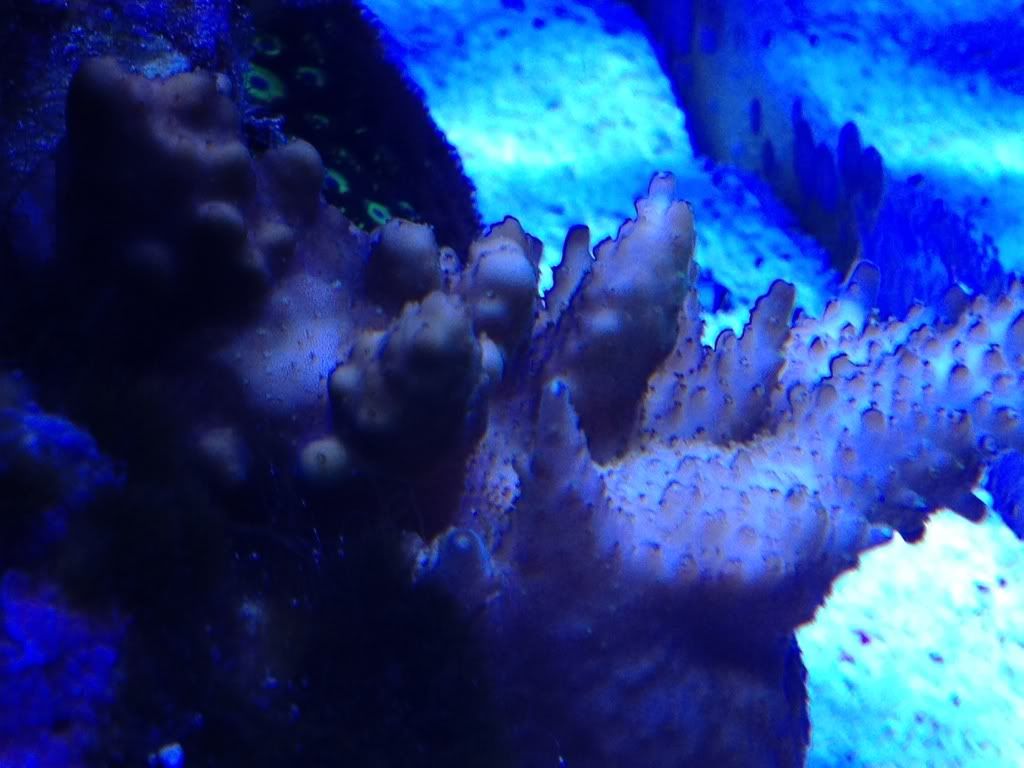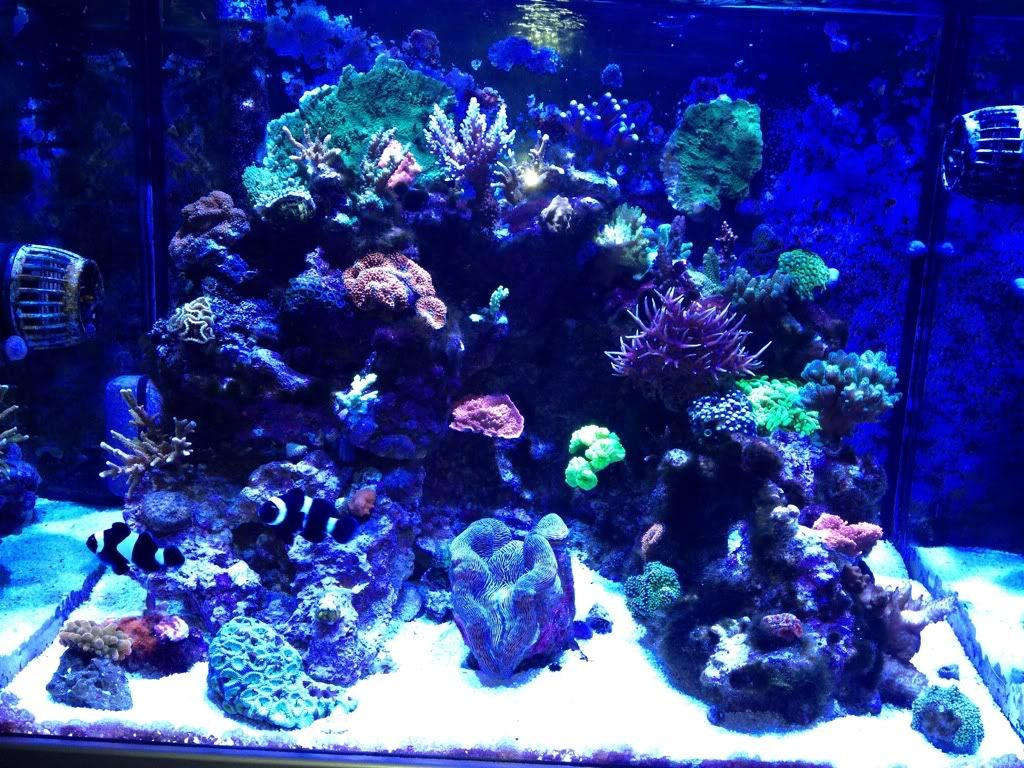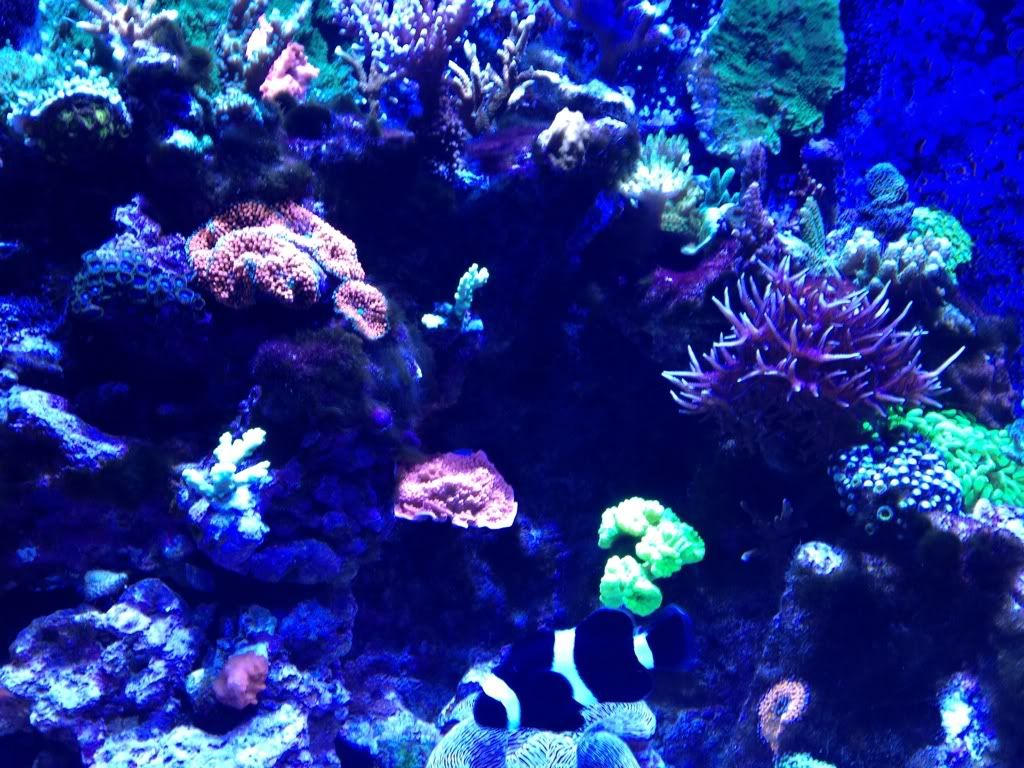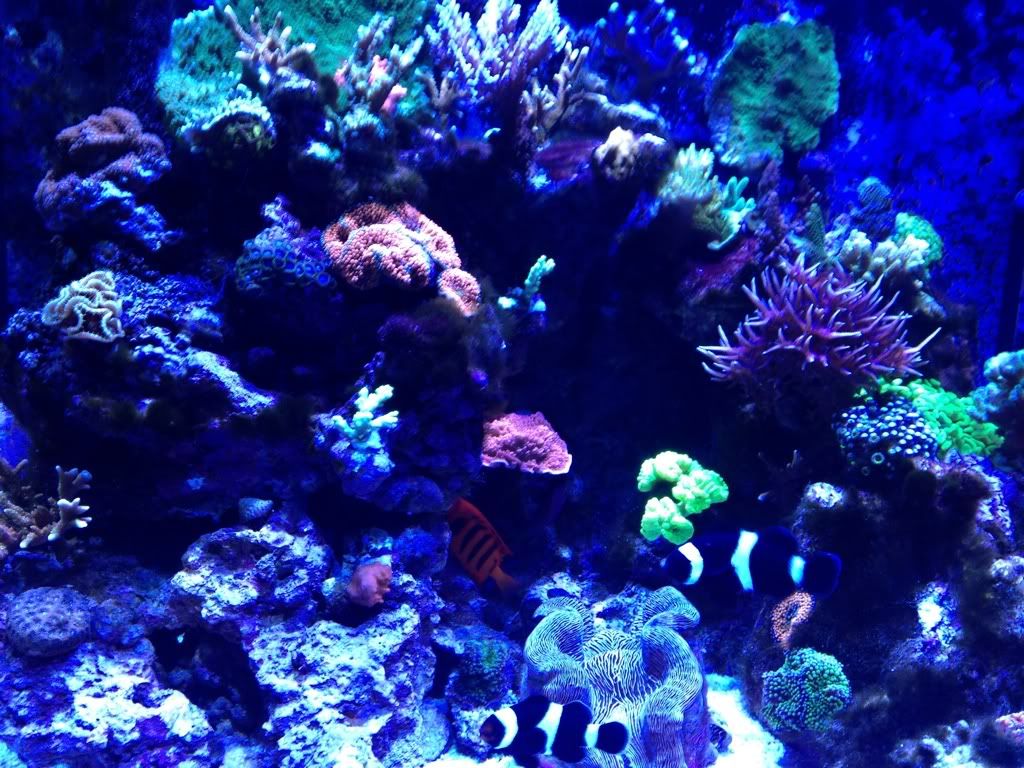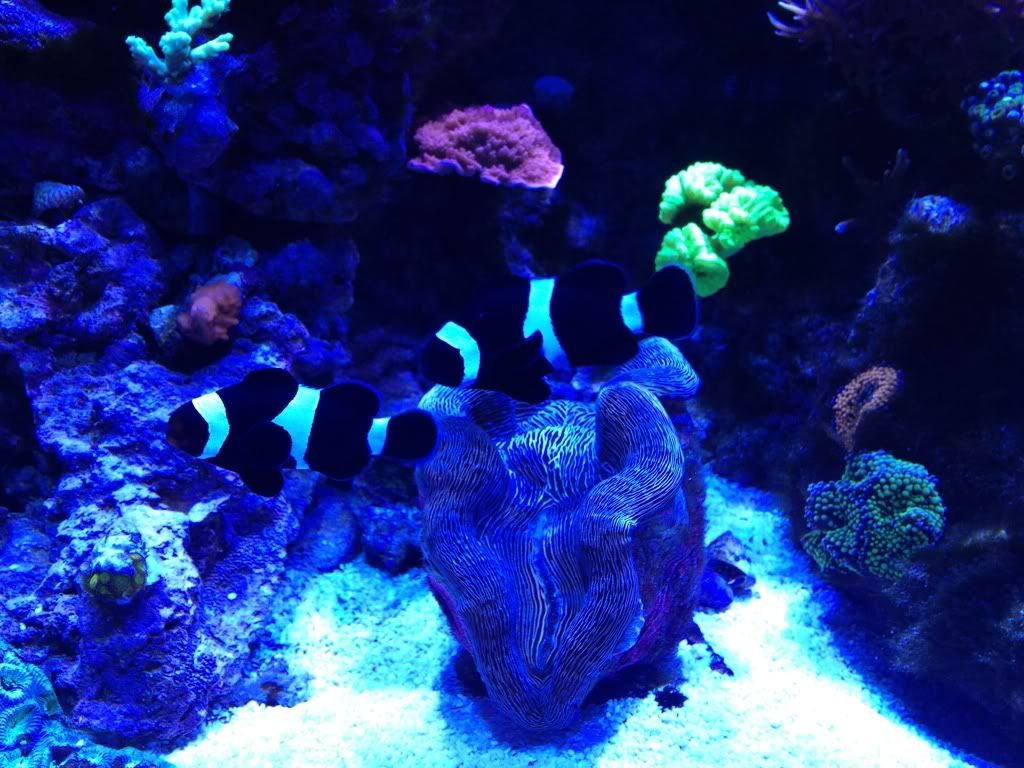30 Gallon SPS Reef Build
- Thread starter lubeck
- Start date
novahobbies
Well-Known Member
Pics??


snakeblitz33
Well-Known Member
looks like it's growing good. XD
Keep it up. Despite your small algae problem it looks like your having pretty good success. Great job!
Keep it up. Despite your small algae problem it looks like your having pretty good success. Great job!
snakeblitz33
Well-Known Member
Sometimes it's good to have a bit of algae in the system. As long as it's not overgrowing anything - let it be. Sometimes that's the best thing to do. Over time it as the tank matures, it might disappear all together.
snakeblitz33
Well-Known Member
Jealous! They have yet to ship my apex to me
snakeblitz33
Well-Known Member
Quote:
Originally Posted by acrylic51 http:///t/387844/30-gallon-sps-reef-build/480#post_3511290
Geeze Seth.....Maybe next time you'll think twice about ordering from that vendor......

Eh, I can understand their reasons. It's hard to have expensive items always in stock all the time and drop shipping can be the next best thing.
Originally Posted by acrylic51 http:///t/387844/30-gallon-sps-reef-build/480#post_3511290
Geeze Seth.....Maybe next time you'll think twice about ordering from that vendor......

Eh, I can understand their reasons. It's hard to have expensive items always in stock all the time and drop shipping can be the next best thing.
lubeck
Active Member
Bummer. I really like them they've done me justice and now that I know I'm 5 mins away I will be picking up a lot of the modules directly from them. However I didn't buy my apex from them directly it was from m$#*€£ depot and I had it in 3 days. I think they always have a few on hand.
Btw shawn. I let my rocks sit over a week and phos never did read anything. I put the pieces back and have made a few adjustments. Stopped feeding flake food and made a huge batch of fresh fish blend. I noticed that there is a decent ray of sun hitting the tank towards the end of the day for about an hour. I told my wife not to have the shades open but that is a hit or miss and need to think of a different plan to ensure no sun is hitting the tank. I've reduced my photo period down to 8 hours and have cut the lighting intensity down 25% Still need to add the DSb to the sump which should also help with filtration and have added more cheats to the sump as well.
Btw shawn. I let my rocks sit over a week and phos never did read anything. I put the pieces back and have made a few adjustments. Stopped feeding flake food and made a huge batch of fresh fish blend. I noticed that there is a decent ray of sun hitting the tank towards the end of the day for about an hour. I told my wife not to have the shades open but that is a hit or miss and need to think of a different plan to ensure no sun is hitting the tank. I've reduced my photo period down to 8 hours and have cut the lighting intensity down 25% Still need to add the DSb to the sump which should also help with filtration and have added more cheats to the sump as well.
spanko
Active Member
You know not a bash here but just an observation. I started back on the first page reading again and was starting to list all of the changes you have made to a tank that is just over a year old. I was amazed to say the least. First off you started the tank on or around the 23rd of Jan and by the 4th of Feb. said you initial cycle had ended. (more on this later). Added fish starting on the 5th of Feb, coral on the 14th and more lighting on the 15th. SPS added on the 20th and a clam on the 26th.You talk multiple times in the thread about too much lighting. Then you get into some heavy dosing regimens, cutting back on them, potassium, iodine etc. etc. discussions.
I am beginning to think that in an effort to "control" things you are making so many changes constantly that you have not given this tank time to "stabilize" and therefore point to this post for you to think about. From Eric Borneman
"The Building of a Reef (tank)
"Hi Eric, I was hoping you could help me to understand better what it means for a system to "mature" or "become established". Hobbyists (me included) are always saying not to keep that sps or this anemone for a least a year until your system has matured. What exactly are the differences between a tank which finished cycling a month ago and one that finished cycling 11 months ago? Does it have to do with water parameters being more stable? Does it have to do with natural food availability? Does "tank maturity" pertain more to those who utilize a DSB, because it takes 6 months for a DSB to become functional ?"
Tank maturity seems to be even more of an issue without the sand bed. The sand bed just takes some time to get enough nutrients in it to sustain populations and stratify into somewhat stable communities and become functional. So, here's the tank reason, and then I'll blow into some ecology for you. When you get a tank, you start with no populations of anything. You get live rock to form the basis of the biodiversity - and remember that virtually everything is moderated by bacteria and photosynthesis in our tanks. So liverock is the substrate for all this stuff, and also has a lot of life on it. How much depends on a lot of things.
Mostly, marine animals and plants don’t like to be out of water for a day at a time...much less the many days to sometimes a week that often happens. So, assuming you are not using existing rock form a tank, or the well-treated aqua cultured stuff, you have live rock that is either relatively free of anything alive to begin with, or you have live rock with a few stragglers and a whole lot of stuff dying or about to die because it won’t survive in the tank. Some, if not most, rock exporters have a “curing process” that gets rid of a lot of the life to begin with and some of this is to keep it from dying and fouling further, but some of it would have lived if treated more carefully.
From the moment you start, you are in the negative. Coralline will be dying, sponges, dead worms and crustaceans and echinoids and bivalves, many of which are in the rock and you won't ever see. Not to mention the algae, cyanobacteria, and bacteria, most of which is dehydrated, dead or dying, and will decompose. This is where the existing bacteria get kick started. Bacteria grow really fast, and so they are able to grow to levels that are capable of up taking nitrogen within...well, the cycling time of a few weeks to a month or so. The “started bacteria” products give me a chuckle. Anyone with a passing knowledge of microbiology would realize that for a product to contain live bacteria in a medium that sustains it would quickly turn into a nearly solid mass of bacteria, and if the medium is such that it keeps them inactive, then the amount of bacteria in a bottle is like adding a grain of salt to the ocean compared to what is going to happen quickly in a tank with live rock in it.
However, if you realize the doubling time of these bugs, you would know that in a month, you should have a tank packed full of bacteria and no room for water. That means something is killing or eating bacteria. Also realize that if you have a tank with constant decomposition happening at a rate high enough to spike ammonia off the scale, you have a lot of bacteria food...way more than you will when things stop dying off and decomposing. So, bacterial growth may have caught up with the level of nitrogen being produced, but things are still dying...you just test zero for ammonia because there are enough bacteria present to keep up with the nitrogen being released by the dying stuff. It does not necessarily mean things are finished decomposing or that ammonia is not being produced.
Now, if things are decomposing, they are releasing more than ammonia. Guess what dead sponges release? All their toxic metabolites. Guess what else? All their natural antibiotic compounds which prevents some microbes from doing very well. Same with the algae, the inverts, the cyano, the dinoflagellates, etc. They all produce things that can be toxic – and sometimes toxic to things we want, and sometimes to things we don’t want. So, let's just figure this death and decomposition is going take a while.
OK, so now we have a tank packed with some kinds of bacteria, probably not much of others. Eventually the death stops. Now, what happens to all that biomass of bacteria without a food source? They die. Some continue on at an equilibrium level with the amount of nutrients available. And, denitrification is a slow process. Guess what else? Bacteria also have antibiotics, toxins, etc. all released when they die. But, the die-off is slow, relative to the loss of nutrients, and there is already a huge population, and yet you never test ammonia. "The water tests fine.” But, all these swings are happening. Swings of death, followed by growth until limited, then death again, then nutrients available for growth, and then limitation and death. But, every time, they get less and less, but they keep happening – even in mature tanks. Eventually, they slow and stabilize.
What's left? A tank with limited denitrification (because its slow and aerobic things happen fast) and a whole lot of other stuff in the water. Who comes to the rescue and thrives during these cycles? The next fastest growing groups...cyanobacteria, single celled algae, protists, ciliates, etc. Then they do their little cycle thing. And then the turf algae take advantage of the nutrients (the hair algae stage). Turfs get mowed down by all the little amphipods that are suddenly springing up cause they have a food source. Maybe you've bought some snails by now, too, or a fish. And the fish dies, of course, because it may not have ammonia to contend with, but is has water filled with things we can't and don't test for...plus, beginning aquarists usually skimp on lights and pumps initially, and haven't figured out that alkalinity test, so pH and O2 are probably swinging wildly at this point.
So, the algae successions kick in, and eventually you have a good algal biomass that handles nitrogen, produces oxygen through photosynthesis, takes up the metabolic CO2 of all the other heterotrophs you can’t see, the bacteria have long settled in and also deal with nutrients, and the aquarium keeper has probably stopped adding fish for a spell because they keep dying. Maybe they started to visit boards and read books and get the knack of the tank a bit. They have probably also added a bunch of fix-it-quick chemicals that didn’t help any, either. Also, they are probably scared to add corals that would actually help with the photosynthesis and nutrient uptake, or they have packed in corals that aren't tolerant of those conditions.
About a year into it, the sand bed is productive and has stratified, water quality is stable, and the aquarist has bought a few more powerheads, understands water quality a bit, corallines and algae, if not corals and other things are photosynthesizing well, and the tank is "mature." That's when fish stop dying when you buy them (at least the cyanide free ones) and corals start to live and grow and I stop getting posts about "I just bought a coral and its dying and my tank is two months old" and they start actually answering some questions here and there instead of just asking questions (though we should all always be asking questions, if not only to ourselves!).
So, ecologically, this is successional population dynamics. Its normal, and it happens when there is a hurricane or a fire, or whatever. In nature though, you have pioneer species that are eventually replaced by climax communities. We usually try and stock immediately with climax species. And find it doesn't always work.
Now, the "too mature" system is the old tank syndrome. Happens in nature, too. That whole forest fire reinvigorating the system is true. Equally true on coral reefs where the intermediate disturbance hypothesis is the running thought on why coral reefs maintain very high diversity...they are stable, but not too stable, and require storms, but not catastrophic ones....predation, but not a giant blanket of crown of thorns, mass bleaching, or loss of key herbivores.
This goes to show what good approximations these tanks are of mini-ecosystems. Things happen much faster in tanks, but what do you expect given the bioload per unit area. So, our climax community happens in a couple years rather than a couple of centuries. Thing is, I am fully convinced that intermediate tank disturbance would prevent old tank syndrome.
My advice on starting tanks is to plan the habitat you want. Find the animals and corals you like. Learn about the tiny area of the reef you will try and recreate, and do not try to make a whole coral reef in one tank. Then, purchase the equipment required to emulate that environment. Then, add the appropriate types of substrate (sand, rubble, rock, whatever) and wait long after “your tank water tests fine” before you add fish and corals. First, add herbivores and maintain water quality. Water changes, carbon, skimming, alkalinity, calcium. Keep the water of high quality, even for things you can’t test for. Wait a few months and enjoy the growth that will happen. Then, add some of the species that you plan to keep….invertebrates and corals. They help create the environment, and also photosynthesize, add biodiversity, stabilize nutrients, etc. Then….then….add fish. The fish will have a reef as their new home. They won’t be stressed by this variable bouillabaisse of water and a strange habitat that keeps changing as things are added or die. They will have a stable tank with real habitat, and then the original concept you imagined will have happened."
I am beginning to think that in an effort to "control" things you are making so many changes constantly that you have not given this tank time to "stabilize" and therefore point to this post for you to think about. From Eric Borneman
"The Building of a Reef (tank)
"Hi Eric, I was hoping you could help me to understand better what it means for a system to "mature" or "become established". Hobbyists (me included) are always saying not to keep that sps or this anemone for a least a year until your system has matured. What exactly are the differences between a tank which finished cycling a month ago and one that finished cycling 11 months ago? Does it have to do with water parameters being more stable? Does it have to do with natural food availability? Does "tank maturity" pertain more to those who utilize a DSB, because it takes 6 months for a DSB to become functional ?"
Tank maturity seems to be even more of an issue without the sand bed. The sand bed just takes some time to get enough nutrients in it to sustain populations and stratify into somewhat stable communities and become functional. So, here's the tank reason, and then I'll blow into some ecology for you. When you get a tank, you start with no populations of anything. You get live rock to form the basis of the biodiversity - and remember that virtually everything is moderated by bacteria and photosynthesis in our tanks. So liverock is the substrate for all this stuff, and also has a lot of life on it. How much depends on a lot of things.
Mostly, marine animals and plants don’t like to be out of water for a day at a time...much less the many days to sometimes a week that often happens. So, assuming you are not using existing rock form a tank, or the well-treated aqua cultured stuff, you have live rock that is either relatively free of anything alive to begin with, or you have live rock with a few stragglers and a whole lot of stuff dying or about to die because it won’t survive in the tank. Some, if not most, rock exporters have a “curing process” that gets rid of a lot of the life to begin with and some of this is to keep it from dying and fouling further, but some of it would have lived if treated more carefully.
From the moment you start, you are in the negative. Coralline will be dying, sponges, dead worms and crustaceans and echinoids and bivalves, many of which are in the rock and you won't ever see. Not to mention the algae, cyanobacteria, and bacteria, most of which is dehydrated, dead or dying, and will decompose. This is where the existing bacteria get kick started. Bacteria grow really fast, and so they are able to grow to levels that are capable of up taking nitrogen within...well, the cycling time of a few weeks to a month or so. The “started bacteria” products give me a chuckle. Anyone with a passing knowledge of microbiology would realize that for a product to contain live bacteria in a medium that sustains it would quickly turn into a nearly solid mass of bacteria, and if the medium is such that it keeps them inactive, then the amount of bacteria in a bottle is like adding a grain of salt to the ocean compared to what is going to happen quickly in a tank with live rock in it.
However, if you realize the doubling time of these bugs, you would know that in a month, you should have a tank packed full of bacteria and no room for water. That means something is killing or eating bacteria. Also realize that if you have a tank with constant decomposition happening at a rate high enough to spike ammonia off the scale, you have a lot of bacteria food...way more than you will when things stop dying off and decomposing. So, bacterial growth may have caught up with the level of nitrogen being produced, but things are still dying...you just test zero for ammonia because there are enough bacteria present to keep up with the nitrogen being released by the dying stuff. It does not necessarily mean things are finished decomposing or that ammonia is not being produced.
Now, if things are decomposing, they are releasing more than ammonia. Guess what dead sponges release? All their toxic metabolites. Guess what else? All their natural antibiotic compounds which prevents some microbes from doing very well. Same with the algae, the inverts, the cyano, the dinoflagellates, etc. They all produce things that can be toxic – and sometimes toxic to things we want, and sometimes to things we don’t want. So, let's just figure this death and decomposition is going take a while.
OK, so now we have a tank packed with some kinds of bacteria, probably not much of others. Eventually the death stops. Now, what happens to all that biomass of bacteria without a food source? They die. Some continue on at an equilibrium level with the amount of nutrients available. And, denitrification is a slow process. Guess what else? Bacteria also have antibiotics, toxins, etc. all released when they die. But, the die-off is slow, relative to the loss of nutrients, and there is already a huge population, and yet you never test ammonia. "The water tests fine.” But, all these swings are happening. Swings of death, followed by growth until limited, then death again, then nutrients available for growth, and then limitation and death. But, every time, they get less and less, but they keep happening – even in mature tanks. Eventually, they slow and stabilize.
What's left? A tank with limited denitrification (because its slow and aerobic things happen fast) and a whole lot of other stuff in the water. Who comes to the rescue and thrives during these cycles? The next fastest growing groups...cyanobacteria, single celled algae, protists, ciliates, etc. Then they do their little cycle thing. And then the turf algae take advantage of the nutrients (the hair algae stage). Turfs get mowed down by all the little amphipods that are suddenly springing up cause they have a food source. Maybe you've bought some snails by now, too, or a fish. And the fish dies, of course, because it may not have ammonia to contend with, but is has water filled with things we can't and don't test for...plus, beginning aquarists usually skimp on lights and pumps initially, and haven't figured out that alkalinity test, so pH and O2 are probably swinging wildly at this point.
So, the algae successions kick in, and eventually you have a good algal biomass that handles nitrogen, produces oxygen through photosynthesis, takes up the metabolic CO2 of all the other heterotrophs you can’t see, the bacteria have long settled in and also deal with nutrients, and the aquarium keeper has probably stopped adding fish for a spell because they keep dying. Maybe they started to visit boards and read books and get the knack of the tank a bit. They have probably also added a bunch of fix-it-quick chemicals that didn’t help any, either. Also, they are probably scared to add corals that would actually help with the photosynthesis and nutrient uptake, or they have packed in corals that aren't tolerant of those conditions.
About a year into it, the sand bed is productive and has stratified, water quality is stable, and the aquarist has bought a few more powerheads, understands water quality a bit, corallines and algae, if not corals and other things are photosynthesizing well, and the tank is "mature." That's when fish stop dying when you buy them (at least the cyanide free ones) and corals start to live and grow and I stop getting posts about "I just bought a coral and its dying and my tank is two months old" and they start actually answering some questions here and there instead of just asking questions (though we should all always be asking questions, if not only to ourselves!).
So, ecologically, this is successional population dynamics. Its normal, and it happens when there is a hurricane or a fire, or whatever. In nature though, you have pioneer species that are eventually replaced by climax communities. We usually try and stock immediately with climax species. And find it doesn't always work.
Now, the "too mature" system is the old tank syndrome. Happens in nature, too. That whole forest fire reinvigorating the system is true. Equally true on coral reefs where the intermediate disturbance hypothesis is the running thought on why coral reefs maintain very high diversity...they are stable, but not too stable, and require storms, but not catastrophic ones....predation, but not a giant blanket of crown of thorns, mass bleaching, or loss of key herbivores.
This goes to show what good approximations these tanks are of mini-ecosystems. Things happen much faster in tanks, but what do you expect given the bioload per unit area. So, our climax community happens in a couple years rather than a couple of centuries. Thing is, I am fully convinced that intermediate tank disturbance would prevent old tank syndrome.
My advice on starting tanks is to plan the habitat you want. Find the animals and corals you like. Learn about the tiny area of the reef you will try and recreate, and do not try to make a whole coral reef in one tank. Then, purchase the equipment required to emulate that environment. Then, add the appropriate types of substrate (sand, rubble, rock, whatever) and wait long after “your tank water tests fine” before you add fish and corals. First, add herbivores and maintain water quality. Water changes, carbon, skimming, alkalinity, calcium. Keep the water of high quality, even for things you can’t test for. Wait a few months and enjoy the growth that will happen. Then, add some of the species that you plan to keep….invertebrates and corals. They help create the environment, and also photosynthesize, add biodiversity, stabilize nutrients, etc. Then….then….add fish. The fish will have a reef as their new home. They won’t be stressed by this variable bouillabaisse of water and a strange habitat that keeps changing as things are added or die. They will have a stable tank with real habitat, and then the original concept you imagined will have happened."
lubeck
Active Member
Henry I don't take your observations as a bash. I know and still have not learned to be patient (enough) for this hobby but continue to work at it. It's hard to keep my hands out of it (according to the article though its healthy to occasionally stir it up)
Even with all the changes though I still don't know what the cause of the excess nutrients are coming from. I find it hard to believe that if I do nothing it will right itself but maybe that's just what I need to do, nothing! (Except water changes )
Even with all the changes though I still don't know what the cause of the excess nutrients are coming from. I find it hard to believe that if I do nothing it will right itself but maybe that's just what I need to do, nothing! (Except water changes )
spanko
Active Member
Pretty sure nothing is not the answer but certainly keep up on the water changes. However in reading Eric's article the maturing process is definitely something to think on. I think in your case the following is most appropriate.
"And then the turf algae take advantage of the nutrients (the hair algae stage). Turfs get mowed down by all the little amphipods that are suddenly springing up cause they have a food source. Maybe you've bought some snails by now, too, or a fish. And the fish dies, of course, because it may not have ammonia to contend with, but is has water filled with things we can't and don't test for...plus, beginning aquarists usually skimp on lights and pumps initially, and haven't figured out that alkalinity test, so pH and O2 are probably swinging wildly at this point.
So, the algae successions kick in, and eventually you have a good algal biomass that handles nitrogen, produces oxygen through photosynthesis, takes up the metabolic CO2 of all the other heterotrophs you can’t see, the bacteria have long settled in and also deal with nutrients, and the aquarium keeper has probably stopped adding fish for a spell because they keep dying. Maybe they started to visit boards and read books and get the knack of the tank a bit. They have probably also added a bunch of fix-it-quick chemicals that didn’t help any, either. Also, they are probably scared to add corals that would actually help with the photosynthesis and nutrient uptake, or they have packed in corals that aren't tolerant of those conditions.
About a year into it, the sand bed is productive and has stratified, water quality is stable, and the aquarist has bought a few more powerheads, understands water quality a bit, corallines and algae, if not corals and other things are photosynthesizing well, and the tank is "mature." That's when fish stop dying when you buy them (at least the cyanide free ones) and corals start to live and grow and I stop getting posts about "I just bought a coral and its dying and my tank is two months old" and they start actually answering some questions here and there instead of just asking questions (though we should all always be asking questions, if not only to ourselves!).
So, ecologically, this is successional population dynamics. Its normal, and it happens when there is a hurricane or a fire, or whatever. In nature though, you have pioneer species that are eventually replaced by climax communities. We usually try and stock immediately with climax species. And find it doesn't always work."
"And then the turf algae take advantage of the nutrients (the hair algae stage). Turfs get mowed down by all the little amphipods that are suddenly springing up cause they have a food source. Maybe you've bought some snails by now, too, or a fish. And the fish dies, of course, because it may not have ammonia to contend with, but is has water filled with things we can't and don't test for...plus, beginning aquarists usually skimp on lights and pumps initially, and haven't figured out that alkalinity test, so pH and O2 are probably swinging wildly at this point.
So, the algae successions kick in, and eventually you have a good algal biomass that handles nitrogen, produces oxygen through photosynthesis, takes up the metabolic CO2 of all the other heterotrophs you can’t see, the bacteria have long settled in and also deal with nutrients, and the aquarium keeper has probably stopped adding fish for a spell because they keep dying. Maybe they started to visit boards and read books and get the knack of the tank a bit. They have probably also added a bunch of fix-it-quick chemicals that didn’t help any, either. Also, they are probably scared to add corals that would actually help with the photosynthesis and nutrient uptake, or they have packed in corals that aren't tolerant of those conditions.
About a year into it, the sand bed is productive and has stratified, water quality is stable, and the aquarist has bought a few more powerheads, understands water quality a bit, corallines and algae, if not corals and other things are photosynthesizing well, and the tank is "mature." That's when fish stop dying when you buy them (at least the cyanide free ones) and corals start to live and grow and I stop getting posts about "I just bought a coral and its dying and my tank is two months old" and they start actually answering some questions here and there instead of just asking questions (though we should all always be asking questions, if not only to ourselves!).
So, ecologically, this is successional population dynamics. Its normal, and it happens when there is a hurricane or a fire, or whatever. In nature though, you have pioneer species that are eventually replaced by climax communities. We usually try and stock immediately with climax species. And find it doesn't always work."
kiefers
Active Member
Warning to readers..........
The previous author mentions a few little things like fires and hurricanes. This does not by any means say its okay to blow up your tanks or give an artificial tsunomi to your system to cure or fix old tank syndrom.......
you have to know someone on these boards will read all of that above and "assume" that somewhere in their heads that that might be a good idea. Lol
Have a good day and reef on my brutha from anotha mutha!
The previous author mentions a few little things like fires and hurricanes. This does not by any means say its okay to blow up your tanks or give an artificial tsunomi to your system to cure or fix old tank syndrom.......
you have to know someone on these boards will read all of that above and "assume" that somewhere in their heads that that might be a good idea. Lol
Have a good day and reef on my brutha from anotha mutha!

